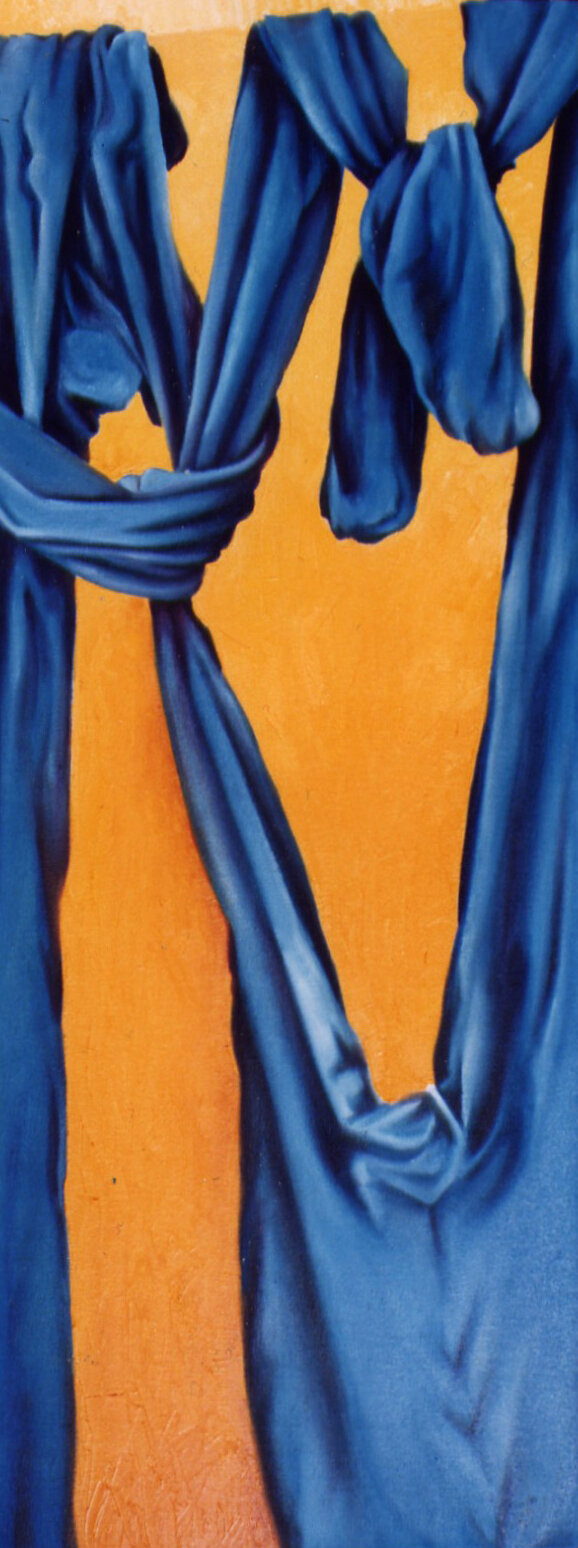
Bluestockings
Bluestocking, derogatory, a woman having or affecting scholarly or literary interests. [Originally a frequenter of the ‘bluestocking’ literary assemblies held in London c. 1750 (from the less formal blue stockings worn by some men); later applied only to women.]
Oxford Canadian Dictionary
Bluestocking 1 // 10 x 19 in (25.5 x 48cm) oil on canvas
Bluestocking 2 // 8 x 21.5 in (20 x 54.5 cm) oil on canvas // SOLD
Bluestocking 3 // 13 x 34 in (33 x 86 cm) oil on canvas // SOLD
Bluestocking 4 // 23.25 x 20.25 in (59 x 51.5 cm) oil on canvas
Bluestocking 5 // 28 x 16 in (71 x 40.5 cm) oil on canvas // SOLD
Bluestocking 6 // 26 x 38 in (66 x 96.5 cm) oil on canvas
Bluestocking 7 // 22 x 28 in (56 x 71 cm) oil on canvas // SOLD
Bluestocking 8 // 8.5 x 23 in (21.5 x 58.5 cm) oil on canvas // SOLD
Bluestocking 9 // 36 x 20 in (91.5 x 51 cm) oil on canvas // SOLD
Bluestocking 10 // 24 x 20 in (61 x 51 cm) oil on canvas // SOLD
Bluestocking 11 // 12 x 18 in (30.5 x 46 cm) oil on canvas // SOLD
Bluestocking 12 // 16 x 34 in (40.5 x 86.5 cm) oil on canvas
Bluestocking 13 // 36.5 x 45 in (93 x 114.5 cm) oil on canvas // SOLD
“These women were determined to function, if possible, in a self- directed way. Their friendships helped them to keep the springs of their minds going, and to avoid that common problem of upper and middle-class women, ennui. Their lives were not the same nor were they equally linked. But their friendships were important in helping them to create a ‘female web of experience’ which supported their efforts at autonomy.”
The Bluestocking paintings take literally the name that evolved for a group of intellectual women in Britain in the mid 1700s. The term was first used by Elizabeth Montagu in a letter relating the story of the well-educated and eccentric botanist, Benjamin Stillingfleet, who attended a gathering wearing worsted blue stockings instead of refined white silk hose. What began as a jest between friends remained alive, evolved, and collected more serious connotations, for the women themselves, of learning, virtue, and friendship. After 1775 ‘bluestockings’ became an umbrella word for the activities of intellectual women.
These paintings recall the origin of the name. They suggest the presence of the human form; they are direct and literal on the one hand, and metaphoric on the other. Space, governed in these paintings by colour field sensibilities, introduces stark visual contrasts.
Rhonda Harder Epp
1999












